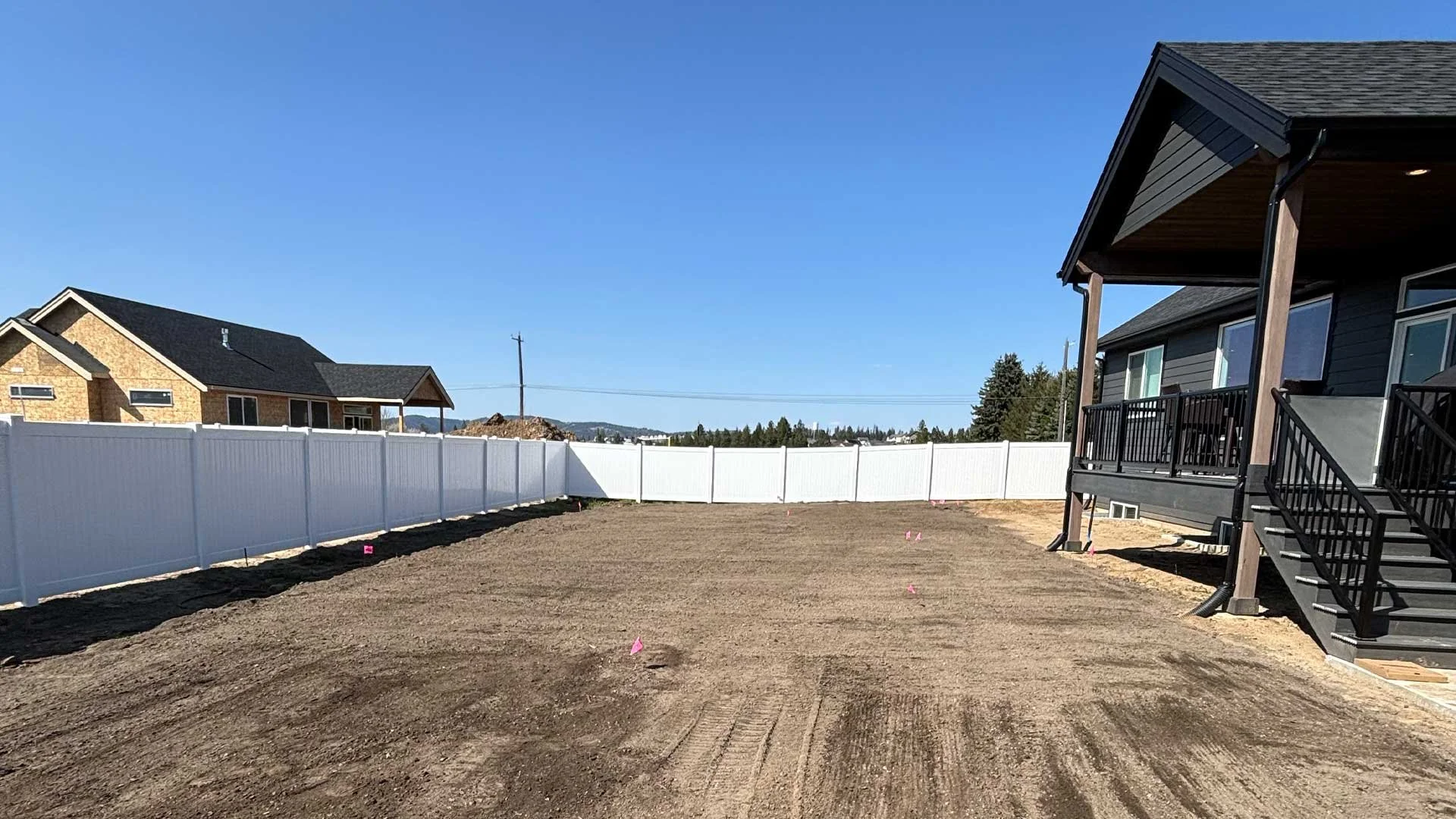Excavation for Sprinkler Systems: Why DIY Isn’t Always Enough
Installing an in-ground sprinkler system is one of the most effective ways to maintain a healthy lawn, especially during Spokane’s hot and dry summers. One critical part of the process that’s often overlooked is the excavation.
While it might seem simple, proper trenching and drainage are more complex than they appear. In many cases, hiring a professional can save time, prevent issues, and ensure long-term performance.
Avey Excavation | Excavation for Sprinkler Systems
What’s Involved in Sprinkler System Excavation?
For a sprinkler system to function properly, pipes must be installed underground at a consistent depth, following a well-planned layout. These trenches connect each sprinkler head to control valves and the water source. While it sounds straightforward, the reality depends heavily on your yard's layout and conditions.
Standard trenching requirements:
Depth: Trenches typically need to be 6–12 inches deep to protect pipes and meet frost line requirements.
Spacing: Trenches follow a mapped irrigation plan to ensure even water coverage.
Soil conditions: Rocky, clay-heavy, or compacted soils add complexity.
Obstacles: Roots, patios, utility lines, and existing landscaping must be carefully navigated.
In Spokane and surrounding areas, where soils can be dense and frost lines matter, precise trench depth and layout are especially important.
Proper Drainage Is Just As Important
Without good drainage, sprinkler systems can cause soggy spots, foundation issues, or pipe settling.
Professional excavation crews plan for:
Using natural slope to guide runoff away from structures
Gravel bedding or drain rock to improve flow and reduce pooling
Compacting backfill to avoid future settling or soft spots
In areas like Spokane Valley or South Hill, where slopes and compacted soils are common, attention to drainage makes all the difference in how your system performs over time.
Common Mistakes Homeowners Make When Trenching for Irrigation
Sprinkler trenching might look like a DIY weekend job, but mistakes are easy to make. Here are a few of the most common:
Skipping utility checks: Failing to call 811 before digging can lead to expensive damage or safety risks.
Uneven trench depth: Shallow or inconsistent trenches can result in poor water pressure, cracked pipes, or uneven irrigation.
Ignoring drainage: Without proper slope and backfill, trenches can trap water or direct it toward your home.
Damaging landscaping: It’s easy to unintentionally disrupt tree roots, garden beds, or hardscapes without a clear plan.
These are the kinds of issues that often lead homeowners to turn to professional crews for trenching.
Why Homeowners Choose Professional Excavation for Sprinkler Systems
Hiring a professional excavator isn’t just about saving effort—it often leads to a better, more durable result. Here’s why:
1. Safe Utility Locating
Excavation professionals always start by calling 811 and verifying the location of underground utilities. This step protects your property, avoids costly repairs, and keeps the project safe.
2. Cleaner, Faster Work
With access to the right equipment, an excavation team can finish in a fraction of the time it might take a homeowner. The results are straighter trenches, faster backfill, and less disruption to your yard.
3. Better System Performance
Professionals know how to prep trench bases, lay pipe at the correct depth, and account for local climate conditions. This minimizes the risk of freezing, cracking, or water pooling—especially important in Spokane’s colder zones.
4. Time and Stress Savings
What could take a DIYer two weekends or more is often finished in a day by a crew. That means fewer delays and faster results.
FAQs
-
The cost can vary depending on factors like the size of your yard, soil conditions, and how easily equipment can access the site. Since every property is different, it's best to request a custom quote based on your specific layout and needs.
-
Professional crews aim to minimize disruption and can often replace sod or clean up the area as part of the job. DIY methods often cause more visible damage.
-
Most jobs can be completed in 1–3 days for a standard-size lawn, but the size of the property and the number of zones can increase job length.
-
Depending on the property, trenching can be done with walk-behind trenchers, mini excavators, or even by hand in tight areas. The right equipment ensures clean cuts and efficient progress.
-
If your property has slopes, clay-heavy soil, or areas that tend to stay wet, you likely need drainage measures like gravel bedding or grading. An on-site evaluation is the best way to know for sure.
-
Spring through early fall is ideal—before the ground freezes and while soil is workable.


